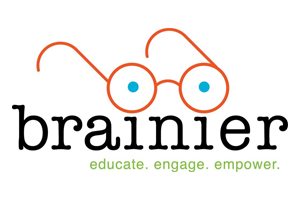With artificial intelligence (AI) transforming the way we live, work and learn, corporate training is becoming more important than ever. Learning and development (L&D) can help employees better navigate AI and other evolving technologies.
Among the many different training methods available, the use of video content in training is surging in popularity, and for good reason. Short videos are often more engaging than other forms of content and have been linked to increased knowledge retention and learning efficiency.
In this article, we will explore the benefits of using video for corporate training and delve into different types of videos that you can use to create compelling and effective training programs.
Why Video?
As previously noted, compared to other forms of media, video is more engaging, leading to improved information retention. In fact, Simpleshow research found that short-form visual content is 65% more effective than PowerPoint Presentations in terms of learning efficiency. This is because our brains are wired to pay more attention to moving images.
Another major advantage of video is its reuse value. Once created, video content can be easily transferred online and accessed on demand by learners, no matter their location. You can easily integrate videos into intelligent learning platforms, allowing you to tailor employees’ learning paths to their unique needs.
Pro tip: Adding subtitles to your videos will ensure everyone can access them, further increasing the reach of your learning content and boosting inclusion.
How to Use Video for Corporate Training
You can use video for any type of training you would normally conduct with traditional methods, such as:
- Onboarding: Video can help showcase your company culture and outline policies. You can also address roles and responsibilities.
- Compliance training: You can use video to showcase compliance regulations and best practices. This is especially effective when used in combination with case studies and storytelling elements.
- Soft skills development: Video can increase the understanding of complex topics, such as internal communication, problem-solving, teamwork or leadership. Similar to compliance training,examples and case studies will add an interactive element and increase understanding.
- Technical training: If you want to explain a process, provide step-by-step instructions or showcase the operation of equipment, video is the way to go. It allows your audience to learn at their own speed and rewatch as needed.
- Change management: Videos can be used to communicate organizational changes, updates and announcements. They can help employees understand the reasons behind the changes, address concerns and facilitate a smooth transition.
- Professional development: Videos can also provide ongoing professional development opportunities. They can cover topics such as time management, presentation skills, project management or industry trends.
Which Type of Video Should You Choose?
Once you have defined the content, you need to determine which type of video you want to create. Let’s explore possible formats for your corporate training videos.
Animated explainer videos.
Animated explainer videos are typically created using a combination of 2D or 3D animation techniques, along with motion graphics and visual effects. Explainer videos are short and visually compelling, often incorporating storytelling elements to make the given information more relatable.
Some tools allow you to create your own video at the click of a button. All you need to do is write a script, and the integrated AI will do the rest. This type of video empowers your learners to unleash their creativity and produce their own videos, showcasing their expertise through user-generated content. The dynamic approach to knowledge sharing not only fosters active engagement with your audience but also empowers them to shape their own training program, resulting in a highly effective learning experience.
Interactive videos.
The more engaged your audience feels, the more information they retain. This is where interactive videos come into play. Interactive videos allow viewers to actively participate in the learning content by making decisions, and frequently include components like quizzes, branching narratives and clickable elements.
This immersive learning experience allows learners to test their knowledge and identify areas that require further development. While interactive videos require more effort throughout the production process, they are an invaluable addition to your learning program.
Talking heads videos.
One of the most common types of videos used in corporate training is the “talking heads” format. Here, a presenter addresses the camera directly while providing information, outlining procedures, or offering their experience.
The most common difficulty with this video type is finding the right instructor and ensuring audio and visual quality. In some cases, it is necessary to hire external professionals to facilitate the creation of talking heads videos, which can be costly.
There are, however, alternatives, such as AI presenter tools that offer AI-generated virtual instructors, with a human-like look.
How-to videos.
How-to videos are instructional videos that guide the viewer through a specific task or process. By visually demonstrating the steps involved, this type of video can effectively convey information and promote self-paced learning.
How-to videos can be used to describe physical processes, such as the operation of a mechanical tool.
A popular way to create a how-to video is by using screencasting. Screencast cast videos capture the screen activity along with an explanation by recording the screen of the presenter so that the viewer can easily follow along. Screencast videos require little effort in production and can be useful for explaining technical processes or giving software tutorials.
How to Maximize Effectiveness
No matter which of the above videos you choose to make and incorporate in your programs, there are some essential aspects to remember:
Define your audience and goals.
After deciding on the overarching content, make sure to think about your audience. Consider:
- What is the job role or function of the audience?
- What is the level of knowledge or experience of the audience?
- What are the goals or objectives of the training?
- What are the learning styles of the audience?
- What the audience’s demographics?
This will allow you to develop a script that is tailored to the needs of your audience, resulting in a more effective training video.
Keep it short.
The most effective training videos are short and sweet. Our attention spans are limited, and short-form content will allow your audience to stay focused. In fact, short content can increase information retention by 20%.
Use storytelling.
Information delivered through stories is more engaging and retained longer in the brain. That is because we get emotionally invested in the content we consume, simultaneously soaking up the information provided. Our brain can now easily recollect this knowledge when we need to apply it, thanks to the emotional connection made throughout the narrative process.
Make it accessible.
You can make your training content more accessible by compiling the individual videos on intelligent learning platforms. These learning management systems (LMSs) use advanced technologies to provide a tailored and optimized learning experience. They analyze content and user data and use this information to create a unique learning path, making it easier for individuals to access and engage with educational content.
Conclusion
If you want to elevate your training programs, increase engagement, improve information retention and make it easier for your employees to develop their knowledge and skills, video training is the way to go.
To ensure that your video has a good return on investment, remember to: Consider your target audience, keep your videos concise and engaging, and ensure accessibility by utilizing intelligent learner platforms.
By harnessing the power of video, you can level-up your corporate training programs and empower your employees with valuable knowledge and skills.





